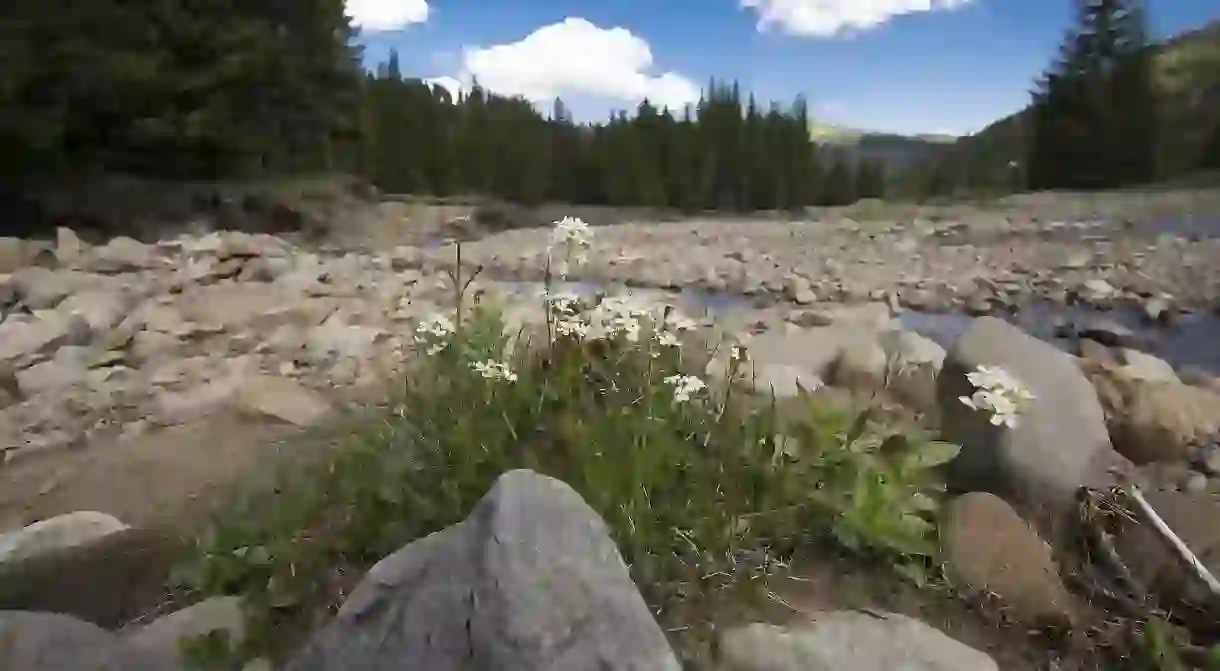The 6 Most Beautiful Hiking Trails in Ukraine

The best way to explore Ukraine is to walk it through. Therefore, put on the comfiest shoes, grab your backpack and set out to the most beautiful hiking trails in the country. Having reached one of the peaks of the bewitching Carpathians or marvelled the starry sky in the Bug Guard National Park, don’t forget to capture the perfect moment.
South Ukraine
Southern Bug
If you know a little about the landscapes of Ukraine, you will not be surprised that the most pleasant hiking trail winds through the south—the Mykolaiv region, in particular. This area has always been attractive to tourists due to its mild climate and the Bug Guard National Park—one of the seven natural wonders of the country. Start the tour from the Myhiya village, which is an ideal place for rafting or catamarans as it lies on the banks of the Southern Bug River. Near the settlements, there is Bug Guard National Park—a unique natural complex. It consists of incredibly steep cliffs and granite river rapids. Aktove canyon is a hidden gem that closely resembles the famous canyons of North America.

Ukrainian desert
This trail covers all the main attraction of the Kherson region. The first stop is the Askania-Nova natural reserve. There you will find the plants from all the climatic zones of the planet and many rare animals from native habitats. The Ukrainian desert called Oleshky Sands is also a place to explore. It is the largest sand expanse in Europe, which consist of endless dunes up to five meters (16 feet) high. When in the south of Ukraine, don’t miss the opportunity to visit Kherson, which is just 20 kilometers (12.4 mi) away from the desert. It is the largest sea and river port city of Ukraine and a great place to spend a day.

West Ukraine
Chornohora
One should follow this route for the sake of the unbelievable panorama, opening from the Chornohora—the highest mountain range in the Ukrainian Carpathians. As its point reaches 1,898 meters (6,227 feet), climb up it gradually. On the way, there are a lot of worthy places to make a stop and enjoy the scenery of Western Ukraine. Bystrets’ village is far from the touristic trails. There you can find peculiar authentic buildings of the region, as well as find the path to the Kosarische ridge. The next destination is the mountain Kostrich, from which the Chornohora and two mountain valleys are clearly visible. The best time for this hike is in winter when the Carpathians are amazingly beautiful.

The Carpathian Alps
The Carpathian Alps hiking trail is located on the very border with Romania. The Marmarosh massif is an area of the reserve—a popular tourist destination. During the journey to the top of 1,940-meter (6,364-foot) ascent you will see the characteristics of your surroundings, featuring deep valleys, numerous rocky ridges and sharp peaks. It is a place of untouched nature, which blooms with an abundance of berries and plants in the summer, and shimmers with fabulous snowy slopes in wintertime.

Synevir
The area of Synevir National Reserve is a fairytale corner of beautiful nature. It is a place of power and the most mysterious landmark of Western Ukraine. The lake of the same name, that impresses with its crystal clear and deep waters, is hidden in the dense coniferous forests in the Carpathian Mountains. Only after overcoming a couple of the mountain peaks one can get to see the Sea Eye (the nickname of the Synevir lake). The most beautiful mountains are Hrofa and Gorgany, which are also considered to be the wildest routes in the Carpathians.

Pip Ivan Mountain
Once you’ve reached the most alpine and adorable village Dzembronya, it is worth enjoying the hiking trail to the Pip Ivan Mountain—the third highest mount in the Carpathians (after Hoverla and Brebeneskul). The peak is so popular for its unique feature—an abandoned observatory called White Elephant (Biały Słoń), which was built by the Polish in 1938. Despite no scientific research any longer being conducted there, the mysterious view of the observatory still attracts a lot of tourists. By the way, its name was given due to the fact that every winter it becomes swept with the snow and from afar resembles an elephant.














